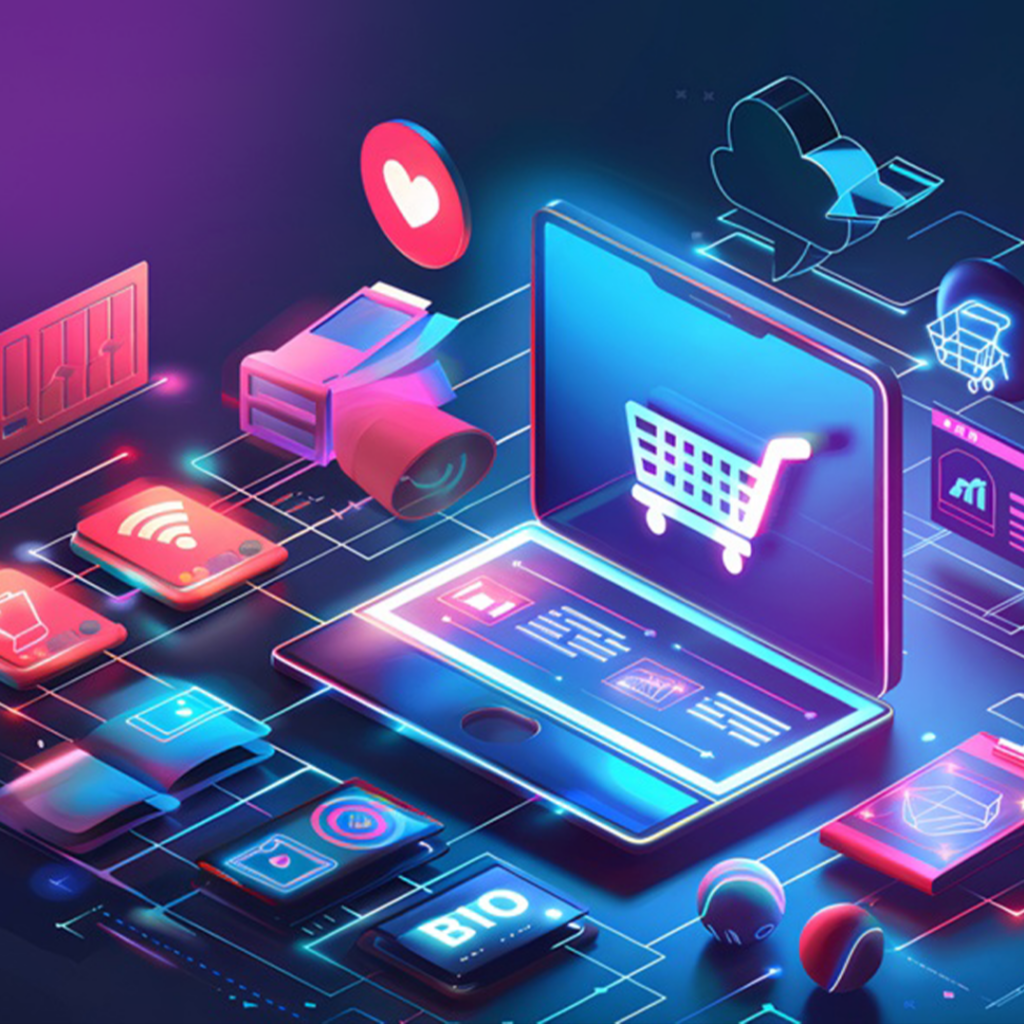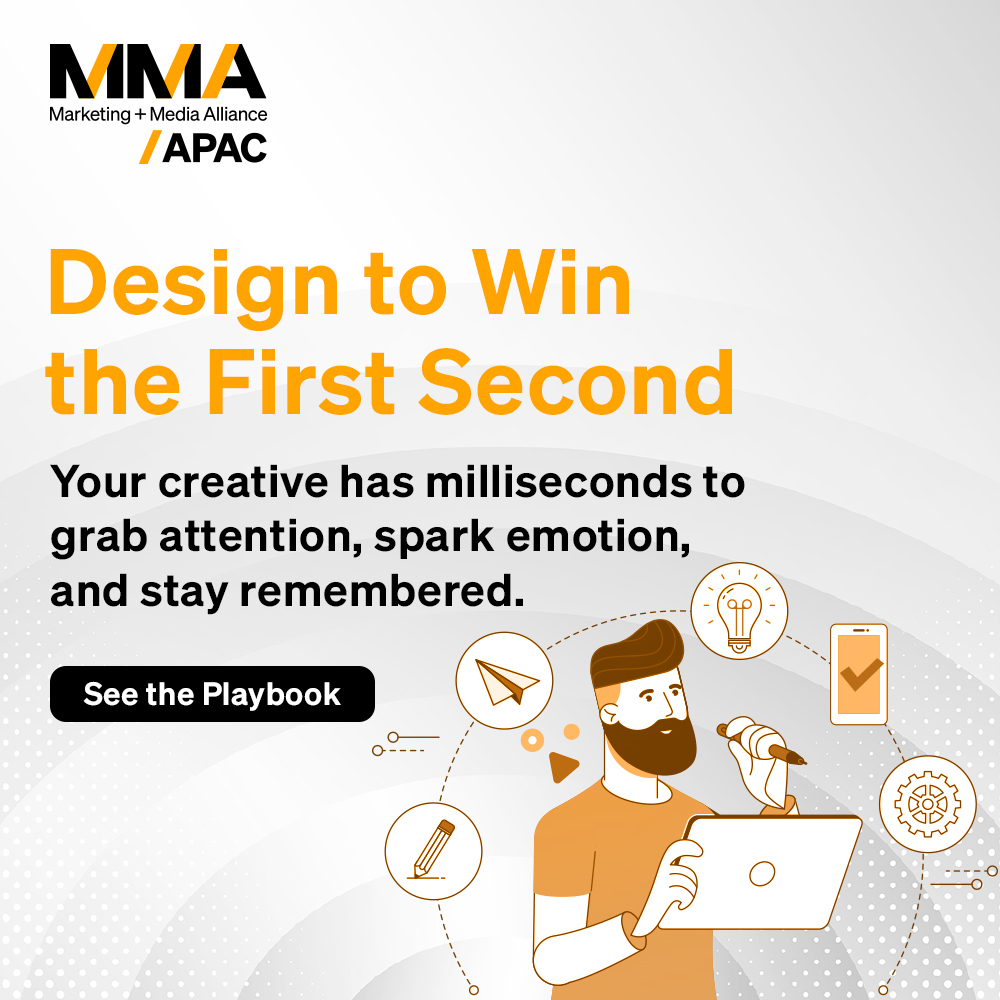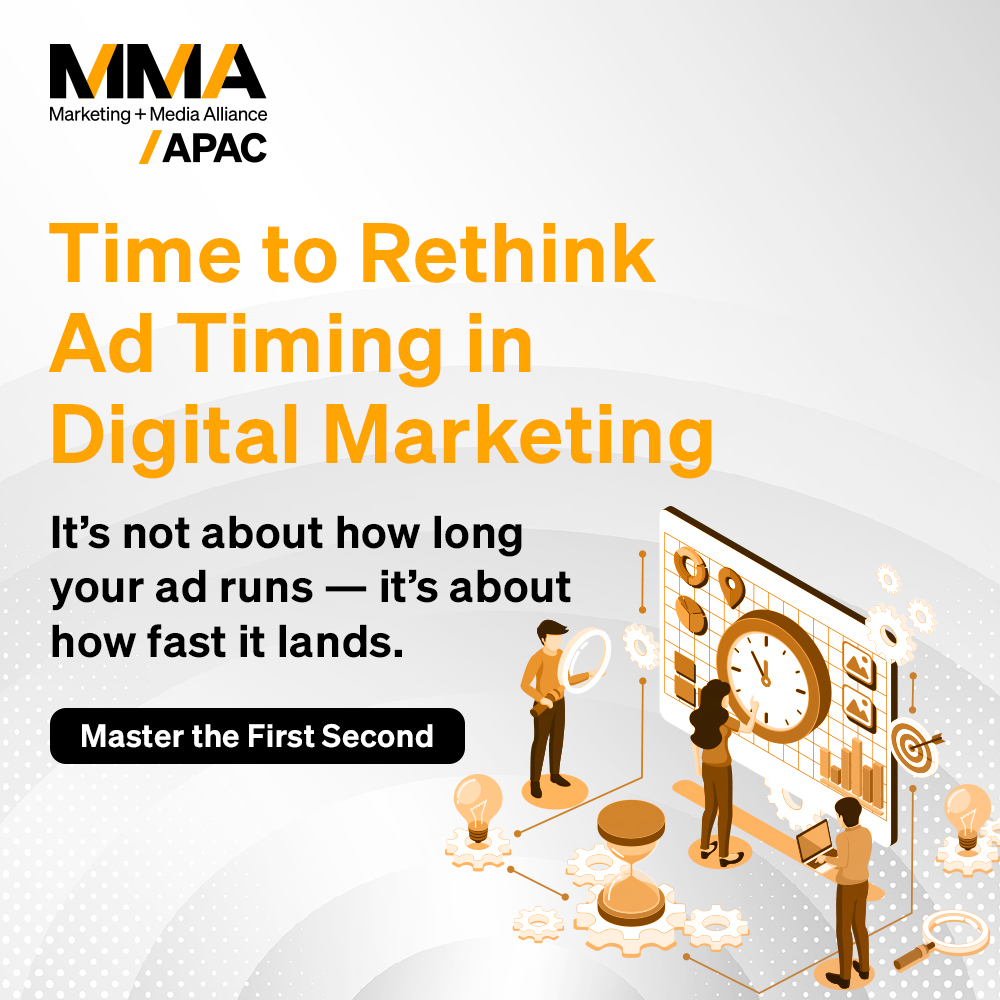
The SMARTIES CHINA 2024 Final Jury Event concluded at Sangha Retreat, Suzhou. 40 marketers from various industries spent two days evaluating and discussing 178 shortlisted cases, selecting gold, silver, and bronze awards in each category, as well as industry awards. As a media partner, Marteker interviewed Elvis Zhou, MMA China Co-chair and Fullsense Founding Partner, discussing topics such as brand marketing strategies during economic downturns and how brands can utilize AI technology.
Elvis Zhou believes that companies must focus on long-term development, avoiding excessive pursuit of short-term profits at the expense of long-term growth. Companies should rethink their growth strategies based on their industry and competitive environment, ensuring high-quality development on the foundation of survival. AI will bring about structural changes within organizations, and the client’s IT team must be deeply involved in this process. The overall efficiency improvements brought by a company embracing AI are different from simply relying on the marketing team using AIGC to enhance content production.
Here is the interview transcript:
Question: How should brands balance short-term market gains with long-term brand building in an economic downturn?
Elvis Zhou: First of all, I believe that from a survival perspective, it’s reasonable for companies to stay crisis-aware in the short term to get through tough times. Over the past 20 to 30, or even nearly 40 years, China has been in a period of rapid growth, so our sense of survival might not have been strong. However, given the changes in both the global and Chinese economic environments, people’s expectations for the future have shifted, and they are beginning to realize the difficulty and importance of survival.
Every entrepreneur should have a survival-first mentality, as this is the foundation of long-term development. Of course, we need to find a balance between survival and long-term brand growth. Many multinational corporations have histories of 50, 80, or even over 100 years, going through various global economic cycles and accumulating vast experience.
These companies teach us that we must balance short-term profits with long-term growth. Over-pursuing short-term gains or rapid sales increases may harm long-term brand development. Long-term growth can be viewed across different cycles—some Japanese and German companies set single-digit annual growth targets, maintaining steady growth and business size, which has allowed them to survive for 60 to 70 years or even longer.
Therefore, Chinese companies should rethink, based on their industry and competition: Should we chase unlimited growth, or focus on sustainable development, ensuring survival and enhancing the quality of growth? In today’s environment, perhaps we need to reduce the emphasis on scale expansion and increase our focus on growth quality. This also involves whether companies should lower their sales prices to boost volume or ensure the continuous improvement of product quality without chasing rapid market expansion. Companies that grow too fast often face immense pressures on cash flow, operations, and the supply chain. Different companies need to find the balance between short-term gains and long-term sustainability.
Question: Why is rapid growth harmful to long-term brand development?
Elvis Zhou: First, it’s difficult to sustain high-speed growth over a long period. Every industry and company in their vertical field will hit growth bottlenecks. Once a company hits this bottleneck, they must either seek technological breakthroughs or expand into new fields. However, entering a new area means facing significant knowledge and talent barriers. In pursuing a second growth curve, companies need to balance investments in new growth with the maintenance of their existing business. Blindly chasing rapid growth as the sole or primary goal can harm certain businesses.
Question: Does the pursuit of rapid growth in Chinese brands relate to the market environment? The business environments in the US and Japan developed over decades or even a century, whereas China’s business landscape has emerged rapidly in the past 30 to 40 years. China’s large population and vast market make the competition more intense.
Elvis Zhou: I believe it is partly related to our national conditions, including the development background of the past 10 to 20 years and the momentum formed during that time.
First, we’ve seen many new businesses in our market, whether during the new consumption stage or capital expansion stage, using rapid growth and aggressive market capture as a strategy. In the early and middle stages of the internet boom, most platforms drove rapid market share growth through aggressive capital burn strategies.
Whether it’s defeating competitors to force them out of the market or quickly seizing market share and then seeking premium returns, this model has been proven successful over the past decade. Thus, in many people’s minds, and even now, this model is still considered relatively mature. However, under the current economic conditions, we believe this model needs to change. These changes may vary depending on the sector. It could be in a specific vertical industry or a regional market within China’s massive market, and the approach may differ.
Question: Brands often follow trends, such as the current wave of short-video marketing. How would you explain this phenomenon, and what effect does it have on brand marketing?
Elvis Zhou: I think we need to look at this in two ways. It’s true that after certain content formats, like short dramas, become popular, we see many brands following the trend. But behind these popular contents, the earliest entrants put in significant effort. For example, Black Myth: Wukong spent years honing its development and went through multiple rounds of testing before it became a hit. Quality content has a certain chance of becoming a temporary sensation. Similarly, at the Paris Olympics, we saw young athletes from the post-2000 generation rise to prominence. In fact, many sports brands had already been closely watching these athletes early on, signing them as brand ambassadors before they became champions.
Before others followed, some mature or well-managed brands created successful cases by forecasting trends. The trend-following behavior must be viewed based on the brand’s specific situation. If a brand has sufficient budget and forecasting ability, it may not be a follower but a trendsetter. However, there are still many mid-tier brands that lack the ability to set trends.
When these trends are led by other brands, mid-tier brands may follow them to stay connected with consumers in a trendy context. I don’t think this is a big issue. Brands should assess whether they should be trendsetters or trend-followers based on their stage, investment capability, and professional capacity.
Additionally, whether you are a trendsetter or a follower, it’s essential to constantly evaluate the return on investment (ROI) of these new marketing efforts compared to other traditional or emerging methods. In marketing, if a new approach cannot be quantified or measured, it is often short-lived.
Question: How do you evaluate the current popular marketing channels, such as Douyin and Xiaohongshu?
Elvis Zhou: First, I believe these two channels have become battlegrounds for all brands. I spoke with a luxury brand last night, and although they still have some reservations about these platforms and may enter a bit later, most consumer goods categories we’re familiar with are already highly active on these platforms.
These platforms are gaining attention primarily due to their vast traffic, user scale, and significant influence. Naturally, brands will prioritize these platforms.
Regarding short dramas, they’re currently a popular content format mainly on Douyin. Brands must consider what type of content to use to interact with consumers. For example, on Xiaohongshu, brands may choose to promote through product recommendations or collaborate deeply with Xiaohongshu’s IP. These are different strategies based on each brand’s needs.
Question: Some people believe that these new platforms are gradually replacing the role of advertising agencies. Do you agree with this?
Elvis Zhou: If we need to find someone who’s particularly skilled on Xiaohongshu or Douyin, we can directly contact the platform’s category manager. Their expertise is often unmatched by the market’s advertising agencies. Indeed, we’ve seen cases where platform managers, using platform-wide data, provide recommendations that most agencies can’t offer.
However, from another perspective, brands won’t rely solely on one platform, so they need cross-platform support. The expertise that agencies offer is more comprehensive, such as consumer insights. Although platforms have access to some second-party data, it’s not the complete dataset that clients need. Cross-platform research and deep studies of specific target groups are sometimes required.
Additionally, creativity is a crucial area. While platforms like Xiaohongshu are strengthening their creative capabilities, their focus on platform content differs from the brand content developed by agencies. Therefore, I believe the two sides are more complementary, with each having its strengths. Ultimately, platforms and agencies work together to provide more complete and diverse capabilities to address a brand’s marketing challenges.
Question: How do you understand marketing technology?
Elvis Zhou: MMA has always paid close attention to marketing technology (MarTech), possibly more deeply and for a longer time than others in China’s marketing industry. I recall seeing many innovative MarTech cases during the Smarties judging in 2019, which were rare in other marketing awards at that time. I believe MMA’s focus on marketing technology innovation has always been high. Despite some challenges for China’s MarTech companies over the past two years, we see continuous technological evolution and new insights emerging.
For example, the recent hype around AIGC and other new technologies has made previous marketing technologies smarter, more efficient, and lowered the barriers to entry. Ultimately, these advancements make people’s work easier and significantly increase productivity.
Just like how computers solved many problems related to human effort and computing power, I believe this trend will continue to bring significant changes. From a future collaboration perspective, all marketers need to stay updated on technological advancements, particularly their applications in marketing scenarios.
Question: You mentioned AI’s role in replacing human labor. Beyond that, what revolutionary changes will AI bring compared to traditional marketing methods? What disruptions will it cause in marketing technologies and tools?
Elvis Zhou: We think about AI across multiple dimensions. First, in terms of human labor, especially repetitive work like call centers, many of us have probably received robot customer service calls recently. While there’s still room for improvement, such as making voices sound more human or refining content recognition, the technology is evolving rapidly, and we need to embrace these changes.
In other areas, we see more possibilities. The marketing industry focuses heavily on AIGC (AI-generated content) rather than just AI itself. AIGC dramatically improves content creation efficiency—sometimes it’s a deep understanding of platform content, and sometimes it’s the quick generation of textual formats. For instance, traditional press releases could now be generated by AI at a 70-80% quality level. Of course, a PR professional can write an excellent press release after years of experience, but in the future, AI might be able to match these capabilities within certain vertical fields by focusing on small models.
Additionally, AI brings significant changes to organizational structures. Embracing these tools will change not only the way individuals work but also the collaboration processes within organizations. Everyone in daily work will increasingly rely on different AI tools, just as we now use software like Windows regularly. We are already starting to use multiple AI models, which are quickly improving efficiency in specific areas.
In the future, we expect more collaboration between these tools, transforming workflows across industries. For example, when a brand shoots a large TV commercial (TVC), many parties are involved—from the brand side to the final video production, with potentially 10 to 20 teams collaborating, including talent agencies, production teams, and post-production. With AI tools supporting the workflow, these parties might be reduced to just 3-5, speeding up content delivery and enhancing workflow efficiency.
This kind of advancement significantly reduces human coordination and communication time, leading not just to higher content production efficiency, but also reducing the amount of work traditionally handled by advertising agencies in coordination. So, beyond individual efficiency improvements, we should pay attention to overall efficiency gains.
Question: What conditions should brands set to fully leverage AIGC’s potential?
Elvis Zhou: Different companies take different approaches when adopting AI and AIGC. Based on our experience, the IT teams on the client side must be deeply involved in this process. It involves many technical integrations, such as integrating these tools into internal workflows or supporting daily work through software, which requires IT’s engagement.
This is similar to the trend we saw for a while where many client companies set up positions like Chief Data Officer (CDO) or Chief Digital Marketing Officer (CDMO). These roles often require collaboration with IT departments, which is the first key factor we see.
Second, all internal teams within the client organization need to embrace AI fully. When providing AI solutions for some clients, we find that it’s not just about offering tools to the marketing or brand teams. For instance, the legal team may need to review preliminary content, which was previously done manually but can now be quickly audited with AI tools that are familiar with advertising law. Similarly, AI has introduced new possibilities in departments like HR, administration, and finance.
Therefore, I believe the efficiency improvements brought by an entire company embracing AI are far greater than simply relying on the marketing team using AIGC to improve content production.
Question: Many marketers have humanities backgrounds. Does this mean they must update their professional skills and adapt to an AI environment?
Elvis Zhou: Yes, I believe today’s world increasingly demands more versatile talent. In highly specialized fields such as law or medicine, deep expertise is crucial. However, in the marketing industry, our skills are becoming more diverse. Marketers need not only the ability to interpret consumer trends but also to analyze data.
With new technologies emerging, marketers don’t necessarily need to become coding experts, but they must know how to use these tools. Embracing and using these tools becomes a vital skill. Even 20 years ago, in China’s marketing market, someone skilled at creating PowerPoint presentations could make a significant impact in a marketing company. I see parallels between that time and now.
Question: AI has been in development for a long time, with several landmark moments, such as AI beating Garry Kasparov at chess or Lee Sedol at Go. Do you think AI will maintain its current momentum, or will it lose steam after the hype dies down?
Elvis Zhou: I personally think that AI’s popularity fluctuates. It’s difficult to guarantee that it will always remain at a high level of interest, given the significant technical knowledge required to understand AI. There’s a cognitive barrier.
Typically, when AI achieves a breakthrough in a specific application scenario, it sparks a wave of attention. For example, the breakthroughs in chess and Go, as well as the recent rise of ChatGPT in marketing, are because AI made a significant leap in application. When these applications succeed, there’s heightened attention for a few months as more people begin using and adopting the technology to see how it can drive change.
Question: How will AI affect other emerging technologies and media, such as the metaverse?
Elvis Zhou: In a way, AI serves as an accelerator compared to concepts like MarTech and the metaverse, which we’ve focused on over the past five years. AI accelerates the development of many existing technologies. For example, when we talk about CDP (Customer Data Platform), we often refer to Marketing Automation (MA). Without AI, MA’s automation is like an assembly line without self-evolution. However, with AI, learning from A/B testing results allows AI to self-evolve, delivering better results from traditional MarTech tools.
Another example is the metaverse. When brands enter the metaverse, two questions often arise: Should they create virtual humans? Should they produce digital collectibles? Virtual spaces may be considered only by major brands. In the current environment, as AI capabilities merge with virtual humans, the speed of virtual human creation, the quality of dialogue content, and interactions with users have all become more efficient and cost-effective. Therefore, AI, as an accelerator, helps existing technologies achieve exponential efficiency improvements, expanding their application scenarios and scope.
Question: It seems that AI can replace many tasks previously handled by humans. What do you think will be the future direction for advertisers?
Elvis Zhou: I don’t think “replace” is entirely accurate. While AI can indeed handle some aspects of our work, I firmly believe that in industries like ours, human value lies in thinking and creativity.
Currently, AI is most effective in improving the efficiency of repetitive, non-creative tasks. This, in turn, frees people up to focus on higher-level thinking and creative work, which I believe is a good thing.
AI excels at summarizing and generating content, but if AI reaches the point where it can think independently, we’ll need to consider whether there’s a fundamental difference between human and machine thought. But for now, I believe that in advertising agencies, consulting firms, law firms, and accounting firms—companies built around human expertise and thinking—AI will be widely adopted to improve efficiency in repetitive tasks, but the creative work, deep thinking, and human connection will remain irreplaceable.
Question: For AI to replace human thinking, it needs to learn from vast amounts of data. However, much of this data is controlled by different platforms and not easily shared. Do you think this will hinder AI’s development?
Elvis Zhou: I think that could be one obstacle, but right now, the larger barriers are energy and computing power. The speed of AI’s development may not progress as rapidly as some sci-fi novels suggest because of these limitations. So, we need to find a balance between energy, computing power, and AI development.
In the future, if computing power and energy can be fully secured, AI’s development will accelerate. However, in today’s global environment, energy constraints still have an impact. Especially regarding AI chip computing power, significant improvements are still needed. Often, it’s not that AI’s capabilities are limited, but the current cost-effectiveness of investing in computing power and energy isn’t sufficient to completely disrupt existing work models.
As we move forward with adequate energy and computing power, we believe AI will have more room to expand.
Question: Returning to our earlier discussion, the current economic outlook is not very optimistic, yet AI is still in development and requires significant investment. Do you think this market environment will negatively affect AI development?
Elvis Zhou: From the current global competitive landscape, we see that major countries are actively embracing AI. AI’s deep iteration and breakthroughs in application scenarios are often driven by national governments or large companies.
I believe these companies and nations will continue to push AI development as a strategic priority, seeking more application scenarios. While large brands may have more budget for experimentation, for most small and medium brands and marketers, staying continuously informed, fully understanding AI’s use cases, and exploring practical applications within a balanced budget and ROI framework is likely the strategy most brand managers and marketers can take.



















